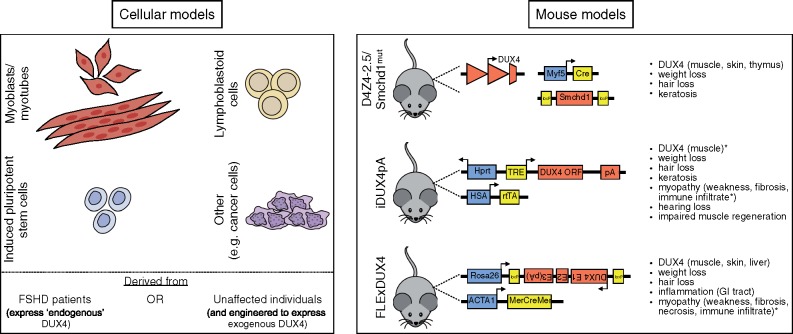Figure 2.
Cellular and murine models of FSHD. The normal and pathological functions of DUX4 are currently being investigated using the depicted cell (A) and murine (B) models. Note that DUX4 can be exogenously expressed in cell culture systems via transfection, transduction or stable integration of inducible transgenes. TRE, tetracycline response element; ORF, open reading frame; pA, polyadenylation signal; rtTA, reverse tetracycline-controlled transactivator; E1, exon 1; E2, exon 2; E3, exon 3; MerCreMer, Cre recombinase protein fused to two mutant estrogen-receptor ligand-binding domains; *, phenotype only apparent when DUX4 expression is induced.

